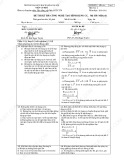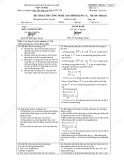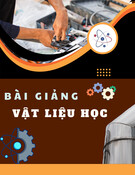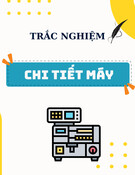
* Corresponding author.
E-mail addresses: i.shu.asu@bk.ru (I. L. Shubin)
© 2017 Growing Science Ltd. All rights reserved.
doi: 10.5267/j.esm.2017.2.002
Engineering Solid Mechanics (2017) 139-144
Contents lists available at GrowingScience
Engineering Solid Mechanics
homepage: www.GrowingScience.com/esm
Fracture of high performance materials under multiaxial compression and thermal
effect
Igor Lubimovich Shubina*, Yuri Vladimirovich Zaitsevb, Vladimir Ivanovich Rimshinc,
Vladimir Leonidovich Kurbatovd and Pyatimat Sulambekovna Sultygovae
aResearch institute of construction physics RAASN, Russia, 127237 Moscow, Lokomotivnaya St., 21, Russia
bRussian Academy of Architecture and Building Sciences; Vienna University of Technology Russia, 107031, Moscow, Dmitrovka St., 24, Russia
cFGBOU VO “National Research Moscow State Construction University” (NIU MGSU), Russia; 129337, Moscow, Yaroslavl Highway, 26, Russia
dBelgorod state technological university of V. G. Shukhov, Russia, 308012, Belgorod, Kostyukov St., 46, Russia
eIngush State University, 386132 Nazran, Gamurzievo municipality, Trunk St., 39, Russia
A R T I C L EI N F O A B S T R A C T
Article history:
Received 6 October, 2016
Accepted 3 February 2017
Available online
6 February 2017
The article discusses the strength of concrete and other brittle materials in the case of non-
uniform biaxial type of compression (σ1>σ2>0)and triaxial compression of σ1>σ2=σ3>0
type (it was assumed that σ> 0 corresponds to compression). It is noted that, when considering
the biaxial loading in the accepted model, probabilistic nature of distribution of stresses along
the contour of pores and inclusions, i.e. stress causing formation and propagation of cracks in
the material,plays an important role. Moreover, the stress across the circuit pores was regarded
as a three-dimensional random field ofS(α,β,γ,ω),whereω- is a random argument. Considering
the average number of overshootsNR we believed that the random fieldofS is not homogeneous
(not stationary): its expectation is not constant, but is a function of nonrandom argumentsМs
=Мs(α;β;γ). External load, corresponding to NR=const(and at the same time constant of level
exceedance probability), first increases and then decreases a little. Heating up to 300оС (573K)
and 400оС (673K) leads to violations, and long-term load leads to significant changes in the
macro- and microstructure of concrete.
© 2017 Growing Science Ltd. All rights reserved.
Keywords:
Strength
Multiaxial compression
Compressive and tensile stresses
Temperature effect
Temperature influence
1. Introduction
There is no consensus on the strength of concrete and other brittle materials under multiaxial
compression among researchers (Calvet 1969; Kupfer et al. 1969; Leadbetter 1965; Raju 1971;
Schickert & Winkler 1977; Stroeven 1973 Huang et al. 2015; Nitka & Tejchman 2015; Linse & Kupfer
2013; Lim et al. 2016; Van Mier & Van Vliet 2002; Tschegg et al. 2015). Thus, in some studies, the

140
strength of materials under multiaxial compression did not differ from the strength under uniaxial
compression. In other studies the increase in strength was obtained under biaxial compression. There
is disagreement about this increase: the maximum increase in strength varies in different studies from
1.3 to 2.7. The cracking boundary in concrete under biaxial compression was studied much less than
the strength.
The fact that the relative level of cracks formation is a material constant and does not depend on
the ratio of principal stresses was confirmed by many investigators. The ways of the development of
the adopted approach in relation to the case of multiaxial compression will be specified next. The
general case of non-uniform biaxial
0
21
compression and triaxial compression of
0
321
type (we assume that 0
corresponds to compression) will also be examined.It
should be noted that when considering the biaxial loading in the accepted model, probabilistic nature
of distribution of stresses along the contour of pores and inclusions, i.e. stress resulting in formation
and propagation of cracks in the material,plays an important role. With that knowledge in mind, the
modified calculation model for the case of biaxial compression is based on the consideration of
volumetric stressed state of three-dimensional body and on the analysis of random shape of pores and
grains of aggregate.
First, it should be considered the formation of cracks in the concrete at the microstructure level, i.e.
near the material pores (Zaitsev et al. 2016). Real material pores, as mentioned above, may have very
different random shape, which leads to the random nature of pores contour stress. Regardless of pores
shape the nature of the stresses concentration is subject to the same laws both in plane elastic and spatial
problems. Therefore, when describing stresses on the three-dimensional contour of pores it is possible
to use a statistical simulation results obtained for a plane problem.
2. Method and results
For a plane problem case of the axial load let's define the probability that a random function of S
exceeds a certain level, i.e. that tensile stresses on pore contour reach a critical value corresponding to
the beginning of cracks, existing on pore contour. Stresses of S, acting on the contour of the space of
the random shape, will be considered as a random function. Its nonrandom arguments will be two
spherical coordinates of α and β, as shown in Fig. 1. The position of the considered point on the contour
of the plane and the angle of γ characterize the orientation relative to the external forces of the site,
which is subject to stress. Thus, the stress on pore contour are regarded as a random three-dimensional
field of
,,,S,where ω is the random argument. To use the value of γ, which characterizes the
orientation of the site under consideration as a nonrandom argument, it is necessary to construct a
continuous vector field on the surface of the spherical space.
Fig. 1. Analysis of stresses along the contour of the spatial pore of random form as a random function of three arguments:
(a ) the emergence of singular points on the vector field constructed on the surface of the sphere; (b) continuous vector
field on the surface of a hemisphere of в.

I. L. Shubin et al. / Engineering Solid Mechanics 5 (2017)
141
The theory of constraints, one of the branches of the topology, shows that continuous vector field
cannot be constructed on the surface of the sphere. This is connected with the appearance of singular
points "obstructions" (Fig.1b) on the poles of the sphere. They prevent the spreading of a continuous
field on the entire surface. It can be shown that some implicit techniques allow to avoid this difficulty.
In this case, the symmetry of problems under consideration allows to review stress only of about one-
half of an air space. It will be possible to construct a continuous vector field on the hemisphere surface
(Fig. 1b), if you introduce γ, as shown in Fig. 1. Reviewing the average number of overshoots of NR,
we consider that the random field of S is not homogeneous (stationary): its expectation is not constant,
but is a function of non-random arguments
;;
ss MМ
. Therefore graphic of
,,
s
M is
some surface in four-dimensional space. Fig. 2 shows the three-dimensional sections of the surface at
some fixed values of β and different values of σ.
Fig. 2. The expectation of stress along the contour of the pores of random shapes
a - under axial compression; b - with a uniform biaxial compression;
в - at non-uniform biaxial compression
In the mathematical sense, all of the tasks on the issues of random fields are very complex.Thus, for a
two-dimensional homogeneous (stationary) isotropic field solutions were obtained quite recently.
There are no solutions for more complex cases of three-dimensional inhomogeneous field yet. In this
regard, the definition of average number of overshoots of our random field will be performed
approximately. The average number of overshoots of a random field in its individual sections with α =
const and β = const will be defined and then the results will be summarized. Fig. 3 illustrates the results
of these calculations, where the abscissa is the ratio of principal stresses 21 :
, and the vertical axis is
the average number of overshoots (NR) over some constant level of R*. Individual lines correspond to
different values of external stress σy and σz: the greater the stresses are, the higher the NR is and the
higher the curve lies.
Fig. 3. Average number of overshoots for a constant level of stress as a function of the ratio of principal stresses.

142
Fig. 3 shows that when there is an increase in the ratio of zy
:the value of NR first sharply
decreases and then slightly increases. This phenomenon can also be explained by purely eureka way:
when 0:
zy
, i.e. under uniaxial compression (Fig. 2a), the site of a random field, where tensile
stresses act, is quite large (the upper part of the field is marked by horizontals), with the maximum
ordinate of 5,0
mah
s
Mretaining its value for all γ.
For uniform biaxial compression of 1:
zy
(Fig. 2b) a relevant section becomes smaller, which
reduces the average number of overshoots, although the maximum ordinate of
5,0
mah
s
M retains its
value for all of α, if 0
and 2/
. Finally, if 5,0:
zy
(biaxial uneven compression Fig.2в),
the maximum ordinate of
5,0
mah
s
M occurs only at one point of
0
; i.e. the average number
of overshoots should be even less. All these findings are in line with the results shown in Fig. 3.
Compared with the curves under consideration, external load corresponding to NR = const (and with it
the constant probability of level exceedance) must follow inverse relationship - it first increases and
then decreases a little. Fig. 4 illustrates this pattern. Here every dashed curve gives the relationship
between the principal stresses of σy and σz, corresponds to a constant probability of exceedance of R*
level. Noteworthy is the fact that, despite the significant changes of level exceedance probability (digits
on the curves) the positions of the curves change very little. Moreover, if proceed not from the 95%,
which roughly corresponds to the upper curve, but from the other value of probability for the crack
border o
T
R, the law of o
T
Rvariations will not changesignificantly at σу:σz.changing. These results refer
to the case where failure of the material begins at the level of the microstructure.
Fig. 4. The relationship between the principal stresses corresponding to a constant probability of exceeding a given level
of R* stresses along the contour of the pores
1 - at the level of the macrostructure (at 300oC);
2 - at the level of the microstructure (at 400oC)
The same approach is also possible for the material under temperature action to 300 ° C (573K)
and 400 ° C (673 K) (Zaitsev & Sultygova 2016). Fig. 5 shows macro- and microstructure of concrete
samples (10х10х40 cm), heated under the load of 5,0
'
to Ct 0
300and Ct 0
400. There is a
weakened structure and the presence of defective contacts with both large and small aggregates. Mortar
separations from granite, 10 - 100 microns gaps and 20 - 100 microns pores catenating along the contact
can be seen under the microscope.
The total macroporosity in these samples is 6%. The pores of irregular shape with cut contours
are dominated. Substantial number of microcracks with opening width of 5 -30 microns, developing
both in pores and in mortar part of the sample, is visible. We observe that the structure of both large
and fine aggregate is weakened by the presence of defects such as cracks and segregations.

I. L. Shubin et al.
/ Engineering Solid Mechanics 5 (2017)
143
(a) (b) (c)
Fig. 5. Micro- and macrostructure of concrete heated to 300 °C and 400 ° C at 5,0
'
;
0
:
а -
Ct
0
300
; b-
Ct
0
400
; c -
Ct
0
300
Fig. 6 shows a concrete structure subjected to short-term temperature exposure up to
Ct
0
300
before long-term test under load of 0.7 from the destructive rate. The overall structure of this sample
has a lower density and higher porosity. Large number of deep cavernous spaces and intensive
development of cracks in the mortar of the sample can be seen under macrographic examination even
at low magnification.
Joints between binding material and aggregates, both large and fine, are weakened due to the
development of pores chains along them, the presence of segregations and 10 - 200 microns gaps. A
similarity of structure segregation was seen in this sample. Thus, heating up to
KCt 573300
0
and
KCt 673400
0
leads to violations, and the results of long-term load are significant changes in the
macro- and microstructure of concrete.
(a) (b)
Fig. 6. Micro- and macrostructure of concrete subjected to prolonged downloaded when
7,0
, after a brief heating to
300
о
С at 0
'
: a - macrostructure; b - microstructure
3. Conclusions
1. Under uniform biaxial compression
1:
zy
a relevant section becomes smaller, which
reduces the average number of overshoots, although the maximum ordinate
5,0
mah
s
M
retains its
value for all of α.
2. If
0
and
2/
at
5,0:
zy
(biaxial uneven compression), the maximum ordinate
5,0
mah
s
M
occurs only at one point
0
; i.e. the average number of overshoots should be
even less. All these findings are in line with the results shown.










![Đề thi Công nghệ tạo hình dụng cụ năm 2020-2021 - Đại học Bách Khoa Hà Nội (Đề 4) [Kèm đáp án]](https://cdn.tailieu.vn/images/document/thumbnail/2023/20230130/phuong62310/135x160/3451675040869.jpg)









![Bài tập môn Cơ sở thiết kế máy [năm] [mới nhất]](https://cdn.tailieu.vn/images/document/thumbnail/2025/20251008/ltgaming1192005@gmail.com/135x160/26601759980842.jpg)


![Tài liệu huấn luyện An toàn lao động ngành Hàn điện, Hàn hơi [chuẩn nhất]](https://cdn.tailieu.vn/images/document/thumbnail/2025/20250925/kimphuong1001/135x160/93631758785751.jpg)


